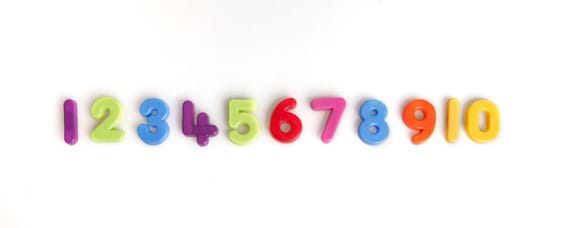
Emily’s Dyscalculia

Written by: Marielle Potvin
Since her school debut, Emily always seemed to put off her math homework; at the very sight of her math book she would make a face, dreading the task to come. Not yet knowing about her dyscalculia, she easily got discouraged and the smallest obstacle would weigh her down. She struggled to rephrase math problems into her own words and couldn’t comprehend the mathematical vocabulary or jargon used in class. When the time came to learn and review her times tables, what a nightmare! Yesterday’s small victories were long forgotten when faced with this new trial.
Needless to say, Emily was already showing signs of dyscalculia.
What Is Dyscalculia?
Like many learning impairments, dyscalculia has nothing to do with lower intellectual capacities, nor is it directly linked to an attention deficit, a lack of stimulation or a sensory disability. This permanent disorder actually manifests early in a child’s learning process, and its cause is neurological. It is estimated that dyscalculia affects 3% to 8% of all students.
However, it’s important to understand that dyscalculia can constitute a genuine handicap for students like Emily. While many learning difficulties are temporary and can easily be overcome with extra support, such as further explanations or tutoring, there is no treatment for dyscalculia.
What are the Symptoms of Dyscalculia?
As early as preschool, Emily had trouble grasping the relationship between numbers and quantity. For this girl, counting on her fingers (even up to five) presented a huge challenge. She had difficulty understanding concepts like “more than,” “less than” and “totalling”, and couldn’t associate a number (no matter how small) with a quantity. She was unsuccessful when it came to simple tasks like stringing beads in a pattern, and even struggled when counting objects she pointed at one by one.
Later on, her teachers wrote different comments on Emily’s report card for her parents:
- Emily has yet to develop her number sense;
- Your daughter has trouble learning how to count properly;
- Exhibits aversion and anxiety when dealing with anything math-related. Student is increasingly manifesting evasive behaviour when it comes to math.
- At risk of failing geometry;
- Your daughter has great difficulty choosing the right operation to solve written problems.
Who Can Diagnose Dyscalculia?
Neuropsychologists are the experts who can evaluate learning disabilities, including dyscalculia. Following an evaluation, the neuropsychologist can diagnose the presence (if any) and type of impairment, as well as establish whether the child has any other learning disorders associated to it (dyslexia, dysphasia or an attention deficit, etc.)
If in doubt, it’s important to consult a neuropsychologist and requested an evaluation. A diagnosis will provide specific information on the child’s math skills, problem-solving strategies, capacity to remember facts, etc.
This evaluation will also provide an assessment of the children’s strengths and weaknesses in terms of intellectual potential (IQ), memory, concentration span and reasoning, with extra emphasis on mathematical skills.
Establishing an Intervention Plan
Like all children diagnosed with a learning impairment (around 10% of all students are affected with learning disabilities ranging in severity), Emily will benefit from a personalized intervention plan at school.
This plan is designed to meet the specific needs of children with learning difficulties, encouraging the implementation of the services these children require. Such a plan is used to define educational goals, determine evaluation criteria, specifies who will work with the child, and lists the possible resources or methods to help the students.
Such a plan is established during scheduled meetings for this purpose, and must include all those involved in the plan’s realization, including the child in question.
As soon as dyscalculia or any other learning disability is diagnosed, parents should:
- Contact the school administration as soon as possible;
- Ensure the school’s staff is well-informed of the child’s difficulty;
- Ask who will attend the meetings to establish the intervention plan;
- Ask questions;
- Learn about the school’s services for students with difficulties;
- Learn about school’s programs and your child’s rights;
- At the end of the meeting, make sure there’s a follow up by scheduling the next meeting with the people in attendance.
An intervention plan must be reviewed regularly (ideally shortly after each report card) to validate if the measures implemented are adequate or make the necessary adjustments.
A plan specifically created for a child with dyscalculia could require the following adaptive measures be put in place:
- Fact sheet to help with memorizing exercises;
- Glossary – mathematical vocabulary;
- Student-friendly visual calculator (whole numbers and fractions)
- Concrete and pictorial models (e.g.: base ten blocks, fraction circles, 10 × 10 grids, etc.);
- Copies of class notes;
- Times table charts/grids;
- Any other useful material.
The above measures will be useful to the student during everyday math exercises as well as during exams.
Hope has now been restored for children like Emily. With an early diagnosis and the right tools to help her manage this impairment, success is well within reach.
Source:
http://www.child-encyclopedia.com/learning-disabilities/according-experts/dyscalculia-early-age
Additional resources:
Useful links:
http://www.aboutdyscalculia.org/index.html
Books:
The Dyscalculia Toolkit: Supporting Learning Difficulties in Maths
Dyscalculia: Action Plans for Successful Learning in Mathematics
Great Tools:

Marielle Potvin, Remedial Teacher
Follow me on Facebook: https://www.facebook.com/marielle.potvin
Email: marielle.potvin@gmail.com
Like many learning impairments, dyscalculia has nothing to do with lower intellectual capacities, nor is it directly linked to an attention deficit, a lack of stimulation or a sensory disability. This permanent disorder actually manifests early in a child’s learning process, and its cause is neurological. It is estimated that dyscalculia affects 3% to 8% of all students. However, it’s important to understand that dyscalculia can constitute a genuine handicap for students like Emily. While many learning difficulties are temporary and can easily be overcome with extra support, such as further explanations or tutoring, there is no treatment for dyscalculia. What are the Symptoms of Dyscalculia? As early as preschool, Emily had trouble grasping the relationship between numbers and quantity. For this girl, counting on her fingers (even up to five) presented a huge challenge. She had difficulty understanding concepts like “more than,” “less than” and “totalling”, and couldn’t associate a number (no matter how small) with a quantity. She was unsuccessful when it came to simple tasks like stringing beads in a pattern, and even struggled when counting objects she pointed at one by one. Later on, her teachers wrote different comments on Emily’s report card for her parents: • Emily has yet to develop her number sense; • Your daughter has trouble learning how to count properly; • Exhibits aversion and anxiety when dealing with anything math-related. Student is increasingly manifesting evasive behaviour when it comes to math. • At risk of failing geometry; • Your daughter has great difficulty choosing the right operation to solve written problems.


